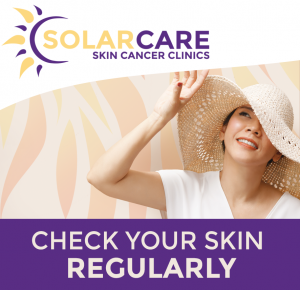Skin Cancer
Skin cancer is the result of damage to the skin cells, which causes abnormal changes and growth. It is generally attributed to UV radiation from the sun, but can be caused by artificial sources as well. Most of us are guilty of getting sun burnt every now and then. However, your unprotected skin can be damaged day after day, even without burning. With constant UV exposure and skin damage comes an increased risk of developing skin cancer. Continue reading for more information and tips to protect your skin.
Types of skin cancer and their symptoms
Skin cancer affects many Australians, with 2 in 3 Aussies expected to develop skin cancer by the age of 70. So knowing what to look for is important.
When should you get a skin check?
Skin cancer does not discriminate based on age, so regardless of your age, everyone should check their skin regularly. You can perform self checks as regularly as you like, such as when you shower. This will help you identify new moles or changes to existing moles. When you notice something different or a mole that concerns you, that is when you should consult a doctor about a skin check. *If you have trouble performing your own skin checks, then you may consider seeing a doctor every couple of years to help you check your skin thoroughly.
What happens at a skin check?

Self-examination

Full Examination



